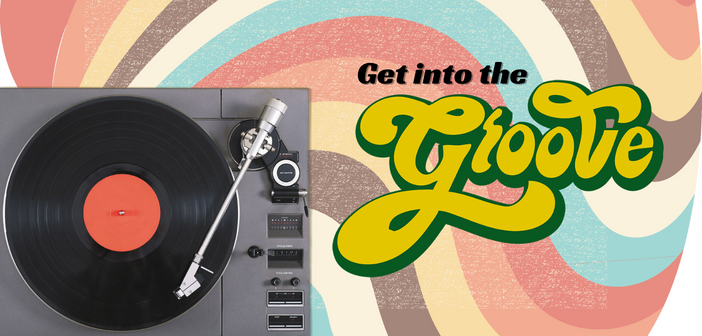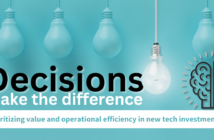Automation is key for attention, team retention, and data comprehension
by and
If there was a single overarching theme to this past summer’s HITEC, it was that every tech vendor is working on clever and cost-conscious ways to help hotels solve the ongoing labor shortage. It’s a likely scenario, however, that this current crisis will take at least several years to abate due to all the workers who have permanently reskilled into other service sector jobs combined with a lower on-average pay scale incentivizing younger candidates toward other industries. However, deepening a hotel’s automation can provide a key path forward.
Much focus has already been given of late to various technologies that are helping hospitality organizations ramp up associate and manager productivity, but this often isn’t lensed correctly, nor is the calculation taking all factors into account. We all know that automation saves time. From there, it’s a matter of computing the time per task multiplied by the wage of the staffer executing said task.
That’s the obvious part of justifying a new hardware or software deployment.
However, what’s perhaps even more important than the time saved through automation is the mental energy saved. And this is where the real win-win comes in. Your team gains time to offer more quality, high-touch service for guests and their morale improves synchronously. Critically for managers, this energy can be redirected toward those projects that require more thoughtful deliberation, such as forecasting and comprehending the loads of data generated in any given period.
INTERRUPTIVE WORKFLOWS
Regardless of industry, it’s a common complaint for workers to push back against the perception of too many meetings, and this can be especially prevalent in hotel organizational culture. If everyone is meeting all the time to groupthink problems or give status reports, there aren’t enough solid, uninterrupted chunks in a given day to focus on the real work – the “knowledge work” as it’s often described – that will actually advance business goals.
Hungarian-American psychologist Mihaly Csikszentmihalyi articulated this perfectly in “Flow” (2014), whereby a state of focused concentration on only one project results in higher intrinsic motivation, job fulfillment, and skill development. Despite what you may believe, humans are horrible multitaskers. Despite how multi-pronged we feel our productivity efforts may be, we are, in fact, singletasking between our email inboxes, text messages, social media, news websites, and that SOP guideline you’ve been trying to polish for the past two hours. All that constant bouncing from task to task inevitably leaves us drained and disengaged, making for a silent factor in lowered team retention.
More recently, bestselling author Cal Newport’s “A World Without Email” (2021) builds on the concept of task immersion for optimized performance by exploring some of the detrimental effects of modern email communication through what he has coined as “attention capital.” Namely, in a world where there’s an overwhelming abundance of communication, attention to any one thing is what drives production and value. More specific to hotels, when team members are expected to always be on – as measured by email response times – we’re inducing a chronic level of background stress into our line of work as well as preventing our managers from entering a state of flow for big projects and delivering more accurate forecasting.
It’s no wonder that European countries are starting to penalize texting and other forms of communication to employees after work hours. The emotional reprieve each evening is much needed to preserve one’s mental health.
But, this benefit is also reciprocal for the hotel. With more focused work via a reduction of email notifications or other tasks that can be migrated to an automation platform, hotels can increase morale, positively affecting both associate and manager retention. In the era of the Great Resignation, the interruptive nature of email systems is but one more contributor to hospitality’s labor woes and should thus be a serious topic to address entering the next business cycle.
AUTOMATION AS A PROCESS
Whatever your cost-benefit analysis reveals for the earnout point for new SaaS platform, it’s much harder to calculate the mental energy saved by automating various interruptive workflows. Once you understand just how important these technologies are for emotional wellbeing, then forget the analysis and implement immediately.
Attaining a heightened level of automation so your teams gain time and aren’t bogged down by multitasking won’t happen overnight nor is there a universal panacea for all your woes. It requires a staggered approach, with a process of constant reevaluation and a timeline for implementation.
Speaking of staggered, here are eight cool automations that were presented at HITEC for consideration:
1. End-to-end PMS and POS integrations, allowing for rich, centralized guest profiles for better analytics, personalized service, and real-time connections with ancillary profit centers like restaurant, spa, golf, events, and activities so there’s less paper pushing by managers to reconcile all this previously disparate information.
2. Advanced business intelligence platforms that can incorporate operational data points to give you highly precisive forecasting models and prescriptive recommendations of what tasks are eating away at your teams’ time as well as which are likely to be the morale-eroding culprits.
3. Labor efficiency tools that can deploy artificial intelligence to help you develop more accurate budgets as well as take much of the data comprehension onto the cloud when it was previously offline – that is, within an Excel spreadsheet on a manager’s desktop.
4. Omnichannel outbound messaging platforms that you can cascade through a series of channels to reach guests on their preferred communication medium.
5. Machine learning chatbots to handle repetitive questions posed on your website live chat, via text, and on social media, with some systems even able of handling reservations.
6. Conversational AI that’s robust enough to accurately replicate a human voice for incoming calls to replace the IVR and, like chatbots, handle basic inquiries before passing the customer off to a live agent.
7. Call centers to outsource your reservation and service calls as well as offering quality reporting to keep track of conversions and call abandonment, freeing up managers’ time in trying to source and supervise your own agents while also redirecting calls away from the front desk so those associates can focus on in-house guests.
8. In-room tablets and mobile apps that act as a single point of control for service requests, hotel information, virtual concierge, and additional purchases.
You can’t implement all of these at the same time. And yet you really need them all to have breathing room to look ahead to what new trends will emerge in the next five years or so. Hence, it’s a matter of evaluating what you can do now, what you can do in a month’s time and what will, reluctantly, have to wait until 2023.
AUTOMATION AND FORECASTING
Circling back to the problem of emails, there are many other lo-fi tactics that can help. To chip away at the mountain of emails, reduce CCs and unnecessary notifications where you aren’t a direct report. Next, make stand-up meetings routine, agenda-driven, and as short as possible so you minimize the back and forth over one-off meeting setup, using scheduling or time-management software for all else. Then, to truly enable knowledge work, allow for half-day and full-day chunks where managers aren’t expected to be checking their inboxes, devoting this time for projects that require flow.
The inescapable truth is that hotel operations need to be lean to maintain margins and steer clear of labor issues. This new reality demands automation tools to reduce the interruptive workflows that are tearing apart your managers’ days and preventing any semblance of flow from being attained.
Without those dedicated two-hour blocks, there’s no time to properly peruse the multitude of data to deduce actionable inferences for further cost efficiencies or revenue opportunities. Moreover, if your IT team must contend with the daily inbox clearing grind, they won’t have time to tackle the setup of new software interfaces so that data can seamlessly flow into your enterprise business intelligence platform for further data comprehension.
FIRING A GUEST
To close out on a more jocular – albeit controversial – note, suppose you have solved many of the challenges introduced by the convergence of our current labor crisis and interruptive workflows. Next comes evaluating which guests are causing the majority of the problems and, when the emotional strain on your team is properly considered, actually have a negative ROI. That is, with the right data connections, can you forecast when a guest isn’t worth the trouble?
In an 80/20 kind of way, there likely are only a handful of past and present guests who fit this bill – the ones who make repeated, small requests and still leave a tepid TripAdvisor review. But you won’t know how to tackle this problem without a solid business intelligence platform that can compute revenues versus total labor per guest.
Until that time, workflow automation is the goal for the near future to ramp up your team’s attention capital. Especially with the inestimable benefit of reducing stress to increase team retention, it’s not just about doing a direct cost analysis for what you will save on paper by deploying a new piece of technology; it’s about the mental energy saved that can be redirected toward more complex and compelling projects – such as forecasting – that have long-term, positive outcomes.





